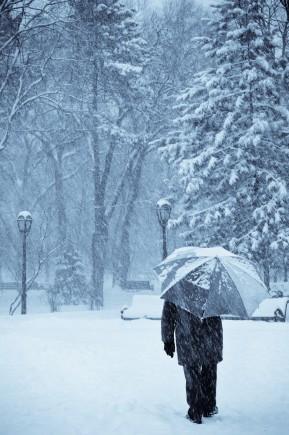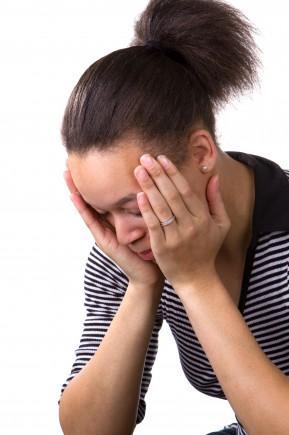 “Some days I was so exhausted I couldn’t even get out of bed,” commented perky, blonde Patty.
“Some days I was so exhausted I couldn’t even get out of bed,” commented perky, blonde Patty.
Cindy, a vivacious brunette added, “I was so depressed that everything appeared gray. I even considered suicide to escape the slump I was in.”
Candi, a youthful redhead chimed in, “I was sure I was losing my mind. Everyone around me seemed happy and I just couldn’t shake my winter funk.”
“My family used to call winter my Lady Macbeth period because I was up running around the house in the middle of the night cooking and cleaning. Then I fell asleep at the dinner table,” Sarah said with a sigh.
Charlie chuckled and replied, “Look at me! I couldn’t stop eating in the winter months. It was like I was getting ready to hibernate. I put on forty pounds the first winter I was in this climate. I never could seem to get the weight off once spring arrived. Then winter hit again and I’d pack on even more weight. Until the doctor diagnosed seasonal affective disorder, I felt like I was just a lazy old slob.”
The five friends are part of a support group for those with seasonal affective disorder, commonly known as SAD or the winter blues.

Are you tired and depressed, particularly during the winter months? Do you lack energy? Do you find you just can’t stop eating once winter arrives? Chances are you may be one of the five percent of North Americans who suffer from seasonal affective disorder (SAD). SAD is a mood disorder related to seasonal variations of light. It affects half a million North Americans between September and April. SAD symptoms peak in December, January, and February, giving it the title: The Winter Blues.
SAD affects women more often than men. Seventy-five percent (75%) of those with SAD symptoms are women. SAD symptoms usually start in late teens and affect people into their thirties. For that reason, physicians have looked for links between SAD and PMS. Because of climate variations SAD is not prevalent in people living thirty degrees north and south of the equator.
SAD symptoms appear to be more severe the farther one lives from the equator. One dweller of the far north summed up the seasonal extremes thus: Summer is “a period of fruition, fulfillment, happiness, or beauty.
No wonder SAD affects increasing numbers of people as you move to the extremes from the equator!
The following behaviors are used as measuring gauges for diagnosis of SAD. Generally, medical personnel look for trends in one or more of these behaviors over three consecutive winters coupled with the absence of the symptoms in the spring, summer, and early fall months.

• Depression: misery, guilt, lack of enthusiasm, feelings of hopelessness, despair, and apathy
• Anxiety: tension, irritability, high stress
• Mood changes: swings in mood. This might include extreme highs in spring and summer and extreme lows during the winter months
• Sleep problems: insomnia, inability to get to sleep, oversleeping, difficulty staying awake and/or disturbed sleep patterns
• Lethargy: feeling listlessness, lack of energy, inability to get out of bed, inability to carry out daily routines
• Overeating: craving for high carb foods resulting in weight gain, inability to stop eating during winter months
• Social problems: irritability, avoiding others, shunning social relationships, reclusiveness
• Sexual problems: loss of sex drive, disinterest in physical intimacy
What Causes SAD?
Many believe seasonal affective disorder is triggered by cold and snow. Even though the harsh chill may be depressing, SAD is related more to daylight, not the temperature. It is believed that lack of sunlight increases the body’s production of a body chemical called melatonin. Lack of sunlight can cause our biological clocks to be out of “sync” with our daily schedules. Changes in melatonin cause sleep-related problems and depression. Why some are affected by SAD and others are not remains a mystery.
Researchers have also not been able to discover why such a high proportion of sufferers are women nor why SAD seems to affect young people more than seniors.How can Seasonal Affective Disorder be Treated?

There are many effective treatments for winter depression. The first step is to try some things you can do yourself. Increase your daily exposure to as much natural light you can.
Try getting outside to go for a walk. At work or school or home try sitting next to a south-facing window to increase your sunlight exposure. Step up exercise and do it outdoors or in a room with lots of windows.
Try as much as possible to carry on with a normal work and social schedule. Keeping busy and productive wards off depression
Establish and maintain a regular sleep pattern of sleep. Go to bed at the same time. Turn out lights and turn off electronics. Use a sleep mask or a white noise machine if it helps. Set an alarm or lights to come on automatically when you should be getting up. If you awaken n the night, don’t turn on lights, read, watch TV or wander around.
Force yourself to remain in bed. Practice deep breathing and visualization techniques to get back to sleep.Try light therapy. It has been proven effective in 85%T of seasonal affective disorder cases. While you can purchase expensive, specialized light therapy lighting fixtures for your home or office, some inexpensive alternatives are also available. Another lighting technique to try is to replace commonly used light bulbs in your home with brighter full spectrum (also known as broad spectrum) light bulbs which provide light that is similar to natural sunlight. The most effective light therapy treatment used today is a bank of white fluorescent lights on a metal reflector and shield with a plastic screen. The best time for light therapy is morning and you need to be facing the light with your eyes open but not staring into the light.
If you’ve tried these self-help things and they don’t seem to be alleviating your symptoms, then it’s time to seek medical help.
Consult your doctor or a mental health professional. SAD symptoms respond to medications or psychotherapy if self-help methods aren’t working. Don’t suffer these symptoms in silence. SAD can be conquered.

In extreme cases of SAD, antidepressant drugs like Paxil, Prozac, and Zoloft may have to be used to reduce or eliminate SAD symptoms. However, the side effects may be unpleasant so drug therapy is used only after other alternatives have proven ineffective.
Look for a therapy or SAD support group. Now that SAD is better understood and more accurately diagnosed, groups are becoming more prevalent. My five friends found each other in group therapy. Their discussion group grew out of their therapy sessions. Their weekly sessions help them share concerns, successes, self-help strategies and low moments.
Candi commented, “Just knowing I have someone from my group whom I can call if I am depressed has meant the world to me.”
Sarah added, “We laugh and cry together. Having someone to share the highs and lows has been a life line for me. Family can be supportive but they don’t really understand how I dread winter. The people in my group do!”
What advice does the group have for family and friends of SAD sufferers? Charlie summed it up nicely: “Try to spend more time people suffering from SAD even though they may not seem to want any company. Help SAD sufferers with their treatment plan. Be a cheerleader for their successes and a shoulder to cry on when they are having a low period. Remind them often that summer is just around the corner. Assure them that their SAD feelings are temporary, and you love them.”
Resources
